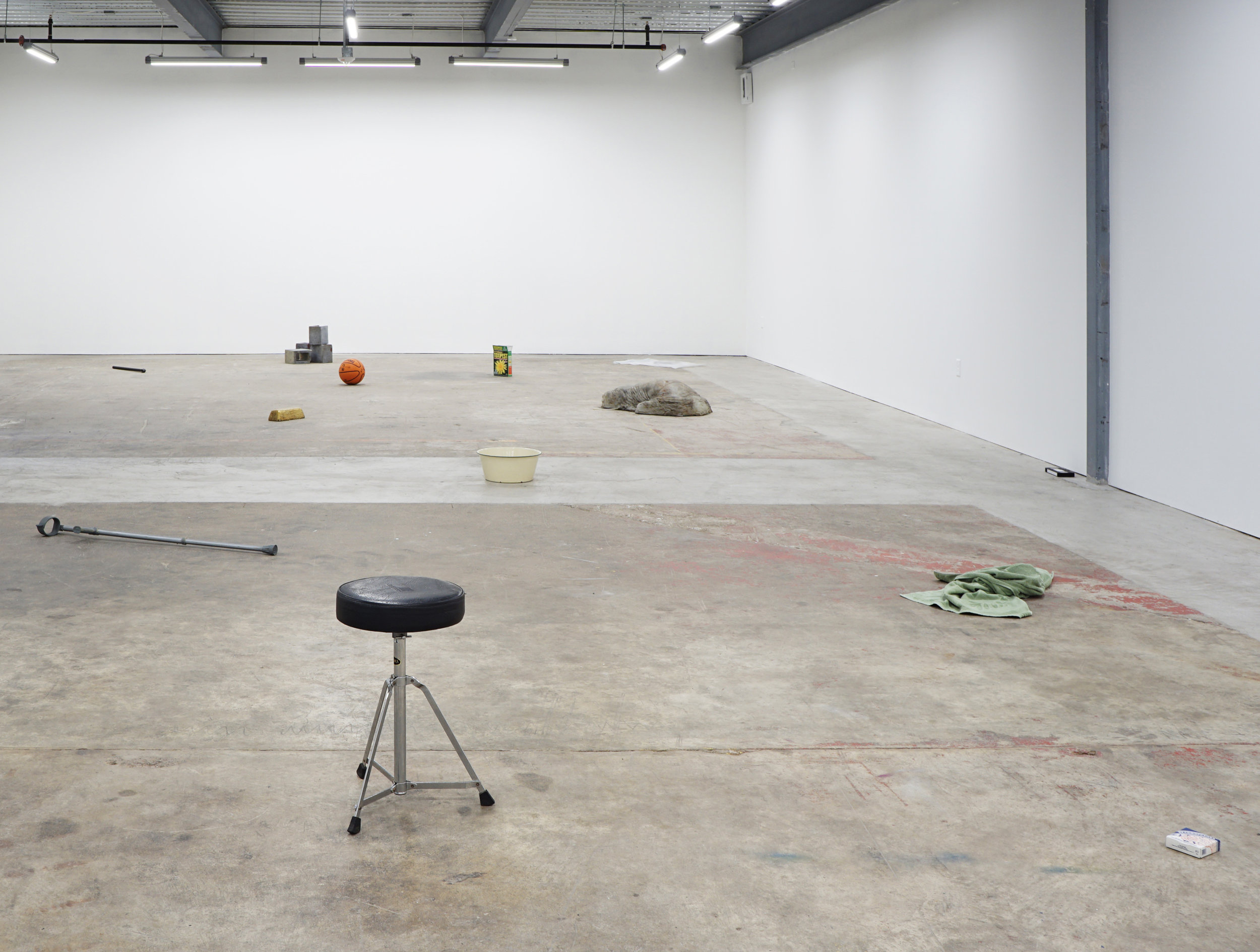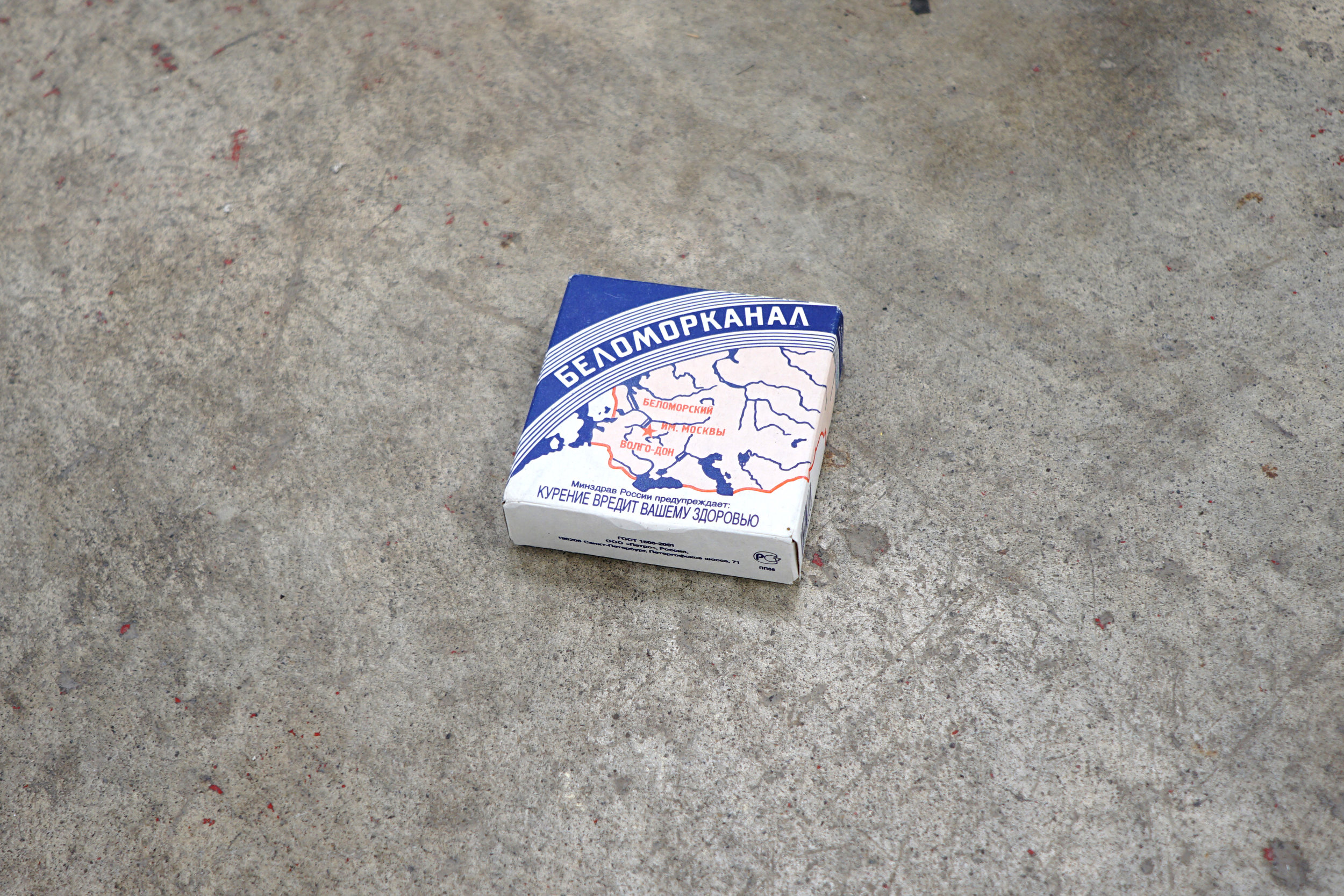Works for an Unrealized Film at et al., etc, April 27 - June 3, 2017
From the press release: "Works for an Unrealized Film takes as its departure point an incident in 2015, in which Discenza was asked by a film production designer to create a collection of works that would be used to portray the work of a fictional artist in a psychological thriller about the art world. Though his proposal for the project was rejected (and ultimately the film was never produced), Discenza uses the current show as an opportunity to realize his original concept: creating an exhibition of appropriated objects that have all been used as props in existing film productions. Playing with the history of the readymade and the notion of aura as a mediator of value, the project also continues Discenza’s interest in implied narrative spaces that must be filled in by the viewer's imagination.
The word "prop" derives from property, a 19th-century theater term for any object used by the actors onstage. In film, props—the shortening of the term now implying a kind of support—are essential to establishing the verisimilitude of the cinematic space; their presence helping to stitch together the illusion of a complete, contiguous reality integral to the immersive experience of a film. In many cases, movie props are simply real-world objects that function in the film exactly as they do in reality—in other words, they “play themselves.” In other instances, props are carefully fabricated objects that are only intended to simulate the appearance of real world items, often for reasons of cost and/or safety. (For example, guns, if they are to be used in scenes in which it is not necessary for them to be fired, are often detailed replicas cast from resin or hard rubber.) Props may also be created to represent things that are entirely imaginary—such as alien artifacts, futuristic technological devices, monstrous body parts, etc. The degree of realism with which such objects are rendered usually depends on how they will appear on camera, since they may only be seen onscreen briefly, from a specific angle or under limited lighting conditions.
Given our culture’s obsession with film, it’s perhaps unsurprising that an avid market exists for used movie props. As a collectible, a prop’s monetary value is established by many factors: the popularity or historical significance of the film in which it was used; its importance within the film’s plot; whether it was used by a main character (an object used by the film’s protagonist will often be referred to as a “hero” prop), and especially the level of fame of the actor playing that character. The uniqueness of the object, as well as its physical condition, are also factors in determining its value—and of course, the degree to which the object’s provenance has been securely established.
The exhibition is composed of twenty actual props used in the production of films such as Prometheus, The Incredible Hulk, and 13 Hours: The Secret Soldiers of Benghazi. By deploying these objects as artworks—or are they merely props intended to represent artworks?—Discenza collides two areas of production that trade in representation and appearance, and which, though seemingly different in their mechanisms, are both mediated by systems of commerce that rely heavily on intangible values such as fame, manufactured scarcity and historical significance. Drawn from a wide range of genres, from sci-fi to romantic comedy, the objects Discenza has selected are (for the most part) intentionally unobtrusive, but it is through this seeming neutrality that they generate a space of narrative tension and ambiguity. Hovering in an indeterminate zone between real-world objects, fictional representations, and fetish commodities (each of the props is accompanied by a Certificate of Authenticity issued by the auction house from which it was obtained, certifying its use in a specific film), the “works” in the exhibition point both to and away from the cinematic space they have passed through, offering up an array of potential narratives while probing the role of appropriation in contemporary artistic practice."
[a downloadable excerpt of the screenplay is here]



















